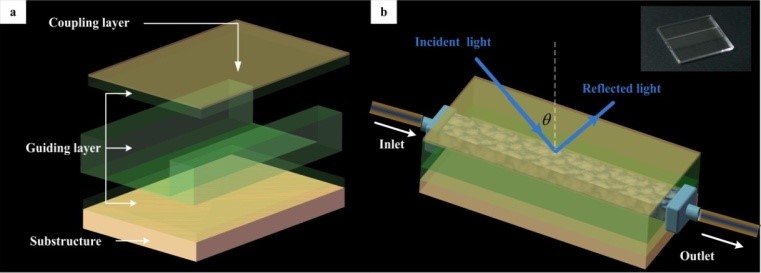
Time:2018-05-23 Read:1916
In optics and solid-state physics research fields, optical microcavities hold great promise because they can confine the resonant modes to very small volumes [1]. The small cavity volume with high Q factor gives new avenues in the pursuit of efficient and compact laser source with low power dissipation [2]. Microcavity or even nanocavity plays a vital part in laser applications.
We adopt a macroscale optofluidic waveguide cavity whose dimension is much larger than wavelength scale as a resonant cavity. The specific hollow-core metal-cladding waveguide (HCMW) structure is introduced to enhance the interaction between the gain medium and the resonant modes. Since the resonant cavity in the waveguide chip is millimeter scale, the ultrahigh order modes (UOMs) can exist in the guiding layer. When the incident angle is very small, a standing optical field is formed between the coupling and substrate layer, resulting in high sensitivity, Q factor and power density. In our experiment, the optofluidic resonator with Rhodamine 6G (R6G) solution is pumped by a continuous laser and the threshold intensity is very low. Our chip is easy to fabricate with low costs, and it is anticipated to open new avenues for lab-on-chip or optofluidic integration.

The research is published in Bei Jiang, Hailang Dai, Xianfeng Chen, “Enhancement of stimulated emission by a metallic optofluidic resonator,” Photonics Res. 6, 597-600 (2018)